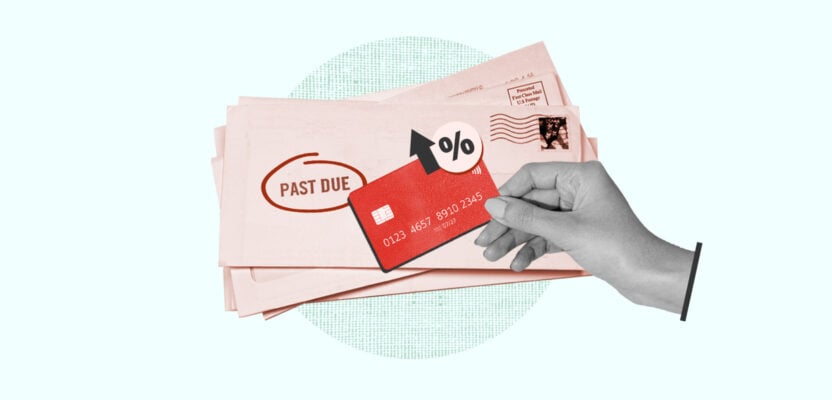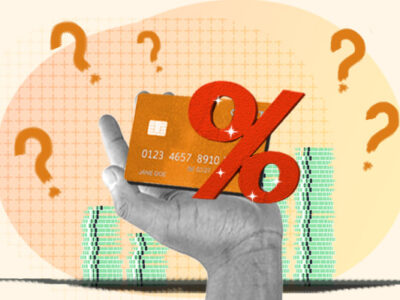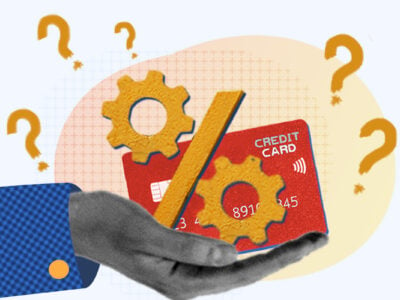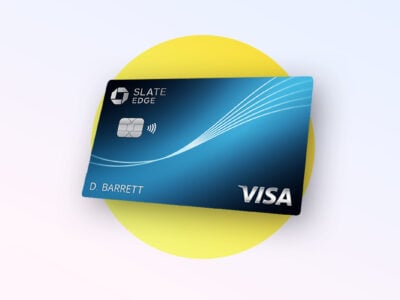Credit cards come with all sorts of APRs—purchase, cash advance, balance transfer, and more. While you hopefully only need to worry about your regular credit card APR, if you ever forget to pay your bill on time, you may find yourself incurring what’s called a “penalty APR.”
Learn more about what penalty APR is, how long it lasts, and ways you can avoid it.
Table of Contents
What is a penalty APR?
Penalty APR is a credit card’s penalty interest rate. You may also see it referred to as punitive interest.
A credit card’s APR is its “annual percentage rate,” or the yearly interest rate charged on unpaid balances left on the card. Your card’s regular APR is also known as its purchase APR, which is the rate at which your credit card purchases will accumulate interest.
Your card’s penalty APR is a higher rate of interest that you’ll be charged after you miss a credit card payment by 60 days or more.
How much higher your penalty APR is than your purchase APR depends on your credit card issuer. However, penalty APRs are often very high, even going up to 29.99%, whereas the average regular APR on a credit card is around 15%–16%.
Penalty APR vs. penalty fee
A penalty APR and a penalty fee (aka late fee) are not the same thing.
If you miss a credit card payment, you’ll likely be charged a late fee right away. Your first fee may be up to $29, and subsequent fees can reach $40 each. According to a Consumer Financial Protection Bureau report, in 2019, the average credit card stood at $31. 1
A card’s penalty APR, on the other hand, is not a set amount (a flat fee). It also won’t be charged after your first missed credit card payment. Instead, it can only be charged after you’ve missed two consecutive payments (i.e., you haven’t paid your bill in 60 days).
How penalty APR works
While you’ll pay a set amount of penalty fee ($29–$40) each month that your credit card goes unpaid, how much a penalty APR will cost you varies depending on how much you owe.
For example, if you have an outstanding balance of $500 and a penalty APR of 29.99%, you’ll accrue $12.50 in interest the first month (that’s $500 times .2999, divided by the 12 months in the year).
This interest will get tacked onto your outstanding balance, which means you’ll pay more interest the next month ($12.80), and so on until you start paying off your balance.
Keep in mind that penalty APR and penalty fees are charged at the same time. Together, they can potentially add hundreds of dollars to your credit card bill.
How long does penalty APR last?
As mentioned, penalty APR usually kicks in after 60 days of missed or returned credit card payments. It can last for 6 months or more.
Under the Credit Card Accountability Responsibility and Disclosure (CARD) Act, your penalty APR must revert to your previous rate once you’ve made on-time bill payments for 6 months. 2
However, this only applies to your current outstanding balance. Your card issuer may decide to keep your higher interest rate for future purchases.
Credit card issuers handle penalty APR differently, so check your card’s terms and conditions to find out when the penalty rate sets in, how long it will last, and what conditions you need to meet to bring back your lower interest rate.
Does penalty APR affect your credit score?
Getting hit with a penalty APR doesn’t itself impact your credit score. However, the 60-day late payment that you incur to get it will appear on your credit report, and that certainly will damage your score.
What’s more, penalty APR can indirectly affect your credit by growing your credit card balance very quickly.
Penalty APRs are usually very high, meaning they can make your credit card balance grow quickly. The higher your outstanding balance is, the higher your credit utilization rate will be. Your credit utilization is the amount of credit you’re currently using, and lower rates are better for your credit score.
Not only can penalty APR raise your utilization rate, but it could make meeting your minimum monthly payments even more difficult on account of the additional charges on your bill. Continuing to miss payments is incredibly damaging to your payment history, which is the most important factor in your credit score.
How to avoid incurring a penalty APR
There are many ways to avoid penalty APR altogether or lessen how much it costs you:
- Set up autopay: Obviously, the best way to avoid paying any credit card interest is to not miss payments. Set up autopay though your credit card account or through your bank account in order to avoid missed payments. Make sure you always have enough in your checking account to pay without overdrawing.
- Get a card without penalty APR: Some cards don’t charge penalty APRs at all. However, late payments will likely still result in fees and could result in other punishments (like card cancellation or changed borrowing terms).
- Understand your card’s terms: Penalty terms vary by card, so it’s important you read and understand how your credit card handles penalties. If you’re struggling to find your credit card’s Schumer Box (where rates, fees, and terms are listed), check the Consumer Finance credit card agreement database.
- Pay off your balance: Paying off your credit card in full each month will save you from having to pay interest at all (on top of ensuring that you’ll never forget to pay on time). If you’ve already triggered a penalty APR, the best thing you can do is stop using your card and pay off your current balance as quickly as possible. As long as your outstanding balance has the penalty interest rate, it’ll cost you more and more each month it goes unpaid.
- Call your card issuer: It never hurts to pick up the phone and plead your case. If you’ve found yourself in recent financial hardship (e.g., due to job less, divorce, or a medical emergency), you should call your credit card company and explain the situation. Try to negotiate more time to pay off the debt before it becomes subject to penalty rates.
Credit cards without penalty APRs
Credit cards without penalty APR do exist. That doesn’t mean late payments on these cards will go without consequences, so you should still make sure to always pay on time.
However, if you’re curious about which cards won’t charge a punitive interest rate if you miss payments, here are some notable credit cards that don’t have penalty APRs:
- Self Visa® + Credit Builder Account
- Citi Simplicity® Card
- BankAmericard® Secured Credit Card
- Quicksilver from Capital One
- Discover it® Cash Back Credit Card
- Petal® Visa®
Notably, Capital One and Discover cards tend to not have penalty APRs. However, this still varies by card.






